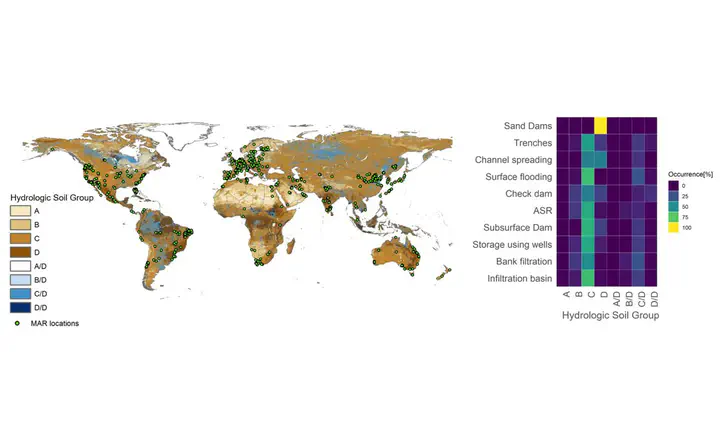Managed aquifer recharge implementation criteria to achieve water sustainability.
Abstract
Depletion of groundwater is accelerated due to an increase in water demand for applications in urbanized areas, agriculture sectors, and energy extraction, and dwindling surface water during changing climate. Managed aquifer recharge (MAR) is one of the several methods that can help achieve long-term water sustainability by increasing the natural recharge of groundwater reservoirs with water from non-traditional supplies such as excess surface water, stormwater, and treated wastewater. Despite the multiple benefits of MAR, the wide-scale implementation of MAR is lacking, partly because of challenges to select the location for MAR implementation and identify the MAR type based on site conditions and needs. In this review, we provide an overview of MAR types with a basic framework to select and implement specific MAR at a site based on water availability and quality, land use, source type, soil, and aquifer properties. Our analysis of 1127 MAR projects shows that MAR has been predominantly implemented in sites with sandy clay loam soil (soil group C) and with access to river water for recharge. Spatial analysis reveals that many regions with depleting water storage have opportunities to implement MAR projects. Analyzing data from 34 studies where stormwater was used for recharge, we show that MAR can remove dissolved organic carbon, most metals, E. coli but not efficient at removing most trace organics, and enterococci. Removal efficiency depends on the type of MAR. In the end, we highlight potential challenges for implementing MAR at a site and additional benefits such as minimizing land subsidence, flood risk, augmenting low dry-season flow, and minimizing salt-water intrusion. These results could help identify locations in the water-stressed regions to implement specific MAR for water sustainability..
